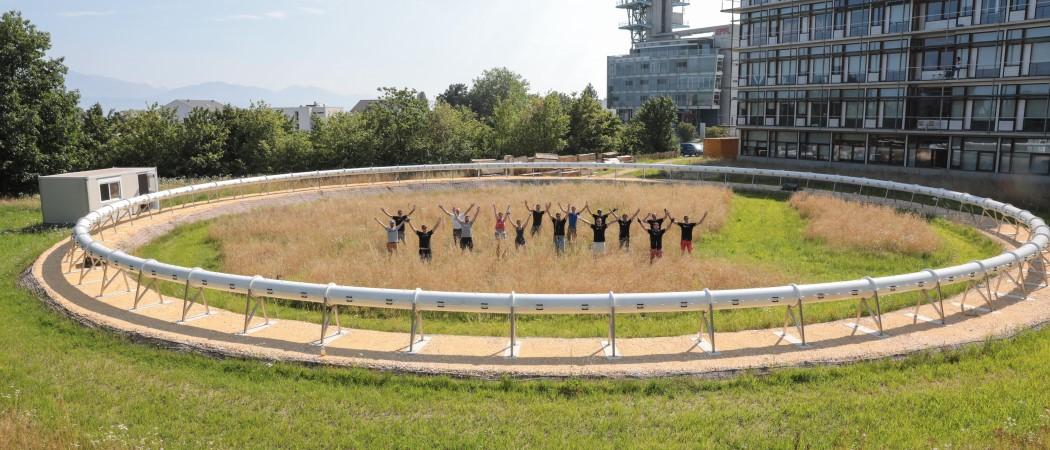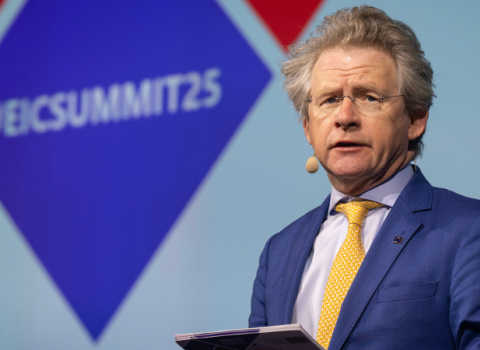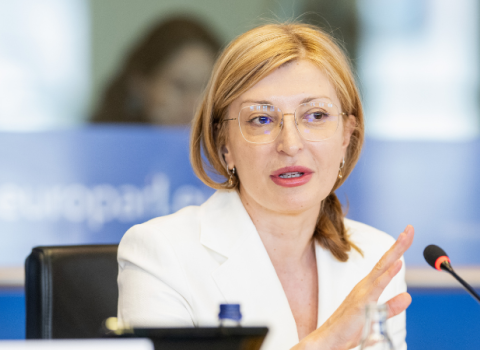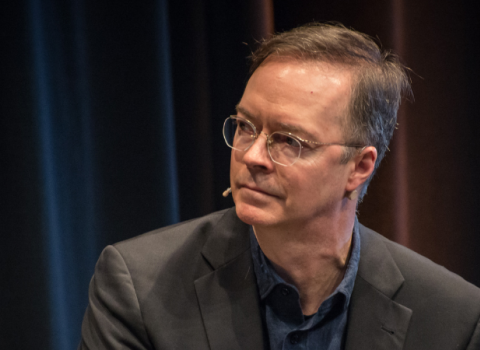Elon Musk may have gone off the idea of building an ultra-high-speed transport system, but Europe still believes. With testing infrastructure under construction and an EU regulatory framework on the cards, the ground is being prepared for the first pilot projects

The EPFL/Swisspod test track. Photo: Murielle Gerber/EPFL
News last year that both Elon Musk and Richard Branson’s Virgin were dialling down their hyperloop projects suggested that time was being called on turning the combination of vacuum tubes and magnetic levitation into a practical mode of transport. But the idea is not dead in Europe. An international Hyperloop Association was announced this year, to be based in Brussels, and testing infrastructure is planned at a number of European locations.
“We definitely have all the capabilities in Europe, and when we go abroad, we notice that people are looking to Europe to take the initiative,” said Sascha Lamme, co-founder of Dutch start-up Hardt Hyperloop and director of the European Hyperloop Centre, which is under construction near Groningen.
Meanwhile, the European Commission is working on a regulatory framework for hyperloop systems, which involve autonomous levitating pods carrying passengers or goods at high speed inside low-pressure tubes. The low pressure means that air resistance is substantially reduced, allowing speeds to increase and vastly improving energy efficiency over conventional modes of transport.
The regulatory framework will cover health, safety, security and environmental standards for the construction and operation of hyperloop systems. “The aim is to support hyperloop promoters' investments, encourage technical solutions as well as interoperability, which will be key to enable the creation of a Europe-wide cross-border network,” a Commission official said. The framework is currently scheduled for the first quarter of 2024.
The idea of running trains in vacuum tubes is more than 200 years old, but the current wave of interest (and the hyperloop name) is down to Elon Musk. He published a detailed paper on the subject in 2013, then followed up with a series of competitions to build and test hyperloop pods.
These contests proved popular, attracting teams from around the world, but they ceased in 2019. In 2022 it emerged that the 1.6 kilometre hyperloop test track at SpaceX in California had been dismantled to make way for a car park. Hyperloop systems still feature in the prospectus of Musk’s tunnelling enterprise, the Boring Company, but practical development seems to be on the back burner.
Yet the SpaceX hyperloop competitions had a remarkable catalytic effect in Europe. Student teams from Warsaw, Lausanne, Delft, Valencia and Edinburgh went on to create hyperloop start-ups, and some have built their own testing facilities.
The most advanced of these is at EPFL, the Swiss Federal Institute of Technology in Lausanne, where a 120 metre circular low-pressure tube has been built in collaboration with the start-up Swisspod. “To the best of my knowledge, what we have here in Lausanne is the first operational test track in Europe,” said Denis Tudor, co-founder and chief executive of the company.
Tudor and co-founder Cyril Dénéréaz set up Swisspod in 2019 after participating in the SpaceX competitions. Much of the subsequent design and experimental work on the company’s propulsion system has taken place through Tudor’s PhD at EPFL, which he completed in January.
The Lausanne test track is a reduced scale model that will allow Swisspod to test its propulsion system at different speeds, over long distances and running times. “The capsule is currently being manufactured, and we are on track to test the technology this year,” Tudor said.
This work has been supported by two grants from the Swiss government, and private investors in Switzerland, the US and United Arab Emirates.
Testing facility
Once the proof-of-concept work in Lausanne is complete, Swisspod’s focus will shift to a full-scale test track currently being built at Pueblo in Colorado.
The decision to carry out this next phase of testing in the US was driven by a collaboration offered by MxV Rail, a subsidiary of the Association of American Railroads, which operates an extensive rail testing site in Pueblo. “It’s a huge testing facility, and it would have been very difficult to match that in Europe,” Tudor said.
Others have ambitions to bring full-scale hyperloop testing facilities to Europe. Hardt Hyperloop was set up in 2017 by members of Technical University of Delft team participating in the SpaceX competitions, and has its own 30 metre test track in Rotterdam. But it wants the next phase to be more collaborative, hence the European Hyperloop Centre.
“We feel that the hyperloop will be developed by an ecosystem,” Lamme said. “The centre will be an open research facility in which industry, start-ups, academics and other hyperloop parties can develop, test, demonstrate and research technologies for hyperloop.”
That could cover vehicle technologies, infrastructure, communications and control systems. The initial phase will involve a cargo-scale test track running for around 420 metres. Construction is expected to be complete this year, with the first tests running early in 2024. If successful, this short track will evolve into a 2.6 kilometre test track.
While the centre’s infrastructure will impose certain limits on the kind of hyperloop systems that can be tested, Lamme is convinced that there will be enough flexibility to involve a wide range of users. “There is full freedom on how you do your propulsion and levitation, so that will allow for competition on the vehicles,” he said. It should also be possible to vary pipe structure, for instance testing concrete as well as steel designs.
In 2021 it established an Institute of Hyperloop Technology, and is currently building a 26 metre test track at the university campus. “This is so that we can do research on loading and unloading cargo from a vacuum system, investigating how we can make this as efficient as possible,” said Walter Neu, co-director of the institute.
But its longer term plan is to establish a large-scale hyperloop research facility at near-by Lathen, taking advantage of a 31.5 kilometre test track built in the 1980s for magnetic levitation trains. The license to operate the site expired in 2011 and most of the electronic infrastructure has now been removed, but the concrete track and the pillars and bridges that support it remains.
“There is a lot of work to do before we can get to the point where we can use this test facility, but on the building side it is ideal for hyperloop,” said Thomas Schüning, the institute’s other co-director.
The track features a straight section of almost 6 kilometres, with loops at either end that make much longer runs a possibility if the whole structure were to be enclosed. “Putting a vacuum tube on top of the track is a construction challenge that you can solve, but a number of political decisions remain to be taken before it is useable, starting with the local authorities, up to the federal level,” Neu said.
This process will be time consuming, and the question of funding also remains to be resolved, making the Lathen facility a long-term project. But Europe will need a full-scale testing ground like this as the various hyperloop technologies reach maturity.
“The other test tracks are focused on the specifics of hyperloop development,” Neu said. “They can all be used in parallel before the best, optimised technology is put together and tested on the Lathen facility, when it is ready.”
Convergence and competition
The hardest choice for Europe’s hyperloop industry is likely to be selecting the technology with the best economic case to take forward. “I think it will be very difficult to converge on one solution, because everyone has their own investors and will say their technology is the best,” Tudor said. “But one way or another, we need to converge if a tangible project is to be built.”
Once that decision is made, he is optimistic that all of the players will find a market for their expertise. One company might be able to take on a short hyperloop project, but when it comes to routes of 1000 kilmetres or more, they will have to work together. “No single hyperloop company today has the power to build such a game-changing line in Europe, or worldwide,” he said.
Lamme predicts a gradual specialisation among hyperloop companies, with some focusing on propulsion while others orient towards the infrastructure. “We are keen to talk and to distribute all the R&D that needs to be done, so that we can all take a piece of this hyperloop market that we are working on,” he said.
And there is still room for new entrants. “There are a lot of opportunities for different parties to pick up certain subsystems and components, to start developing those and innovating to make them even better,” said Lamme.
“There is a lot of development going on, but the scene is not at all crowded and there is scope for other players to emerge,” Neu said. One under-addressed area is the creation and maintenance of the large-volume vacuums needed for future hyperloop networks. Safety will also be a priority.
“If you run with a high frequency of pods inside a tube, very close together, you need new safety systems,” said Schüning. “It’s like running a train in a tube but with the speed of an aeroplane, and that is very different from what we have now.”
In addition to start-ups, there is also the potential for other industries to get involved in hyperloop, notably from aerospace sector. “An aeroplane is pressure safe, and most of the other technologies you need are there, you just don’t need the wings,” Neu said.
Meanwhile, academia will also have a role to play in the developing ecosystem. “We see ourselves as system integrators, able to take an objective view and assess all the proposed technologies, think about how to put them together, and to look at how to certify their use and safety,” said Neu.
Early adopters
Convergence on standards and technology will be important drivers, but the decisive step for Europe will be early adopters. “We will need pilot lines that show the feasibility of the system in real-life applications, and that is the most important missing piece right now,” said Neu.
The likely first step is to look at the hyperloop for cargo transport. “We can use smaller packs to do this, and smaller tubes, perhaps 2 - 2.5 metres in diameter,” Schüning said. “These will be easier to install in the landscape, whereas if you start with 4 – 5 metre tubes for passenger transport, there may be more objections.”
The Institute of Hyperloop Technology is currently working in the framework of the EU-funded project ePIcenter involving logistics supply at Volkswagen in Wolfsburg. The idea is to design a production support line with hyperloop technologies that will reduce the road traffic in the city. “We would like this to be one of the pilot lines to show the feasibility of the system,” said Neu.
Operating cargo systems will provide useful knowledge for eventual passenger systems, which might begin with city-to-city connections of up to 200-300 kilometres. The customer in this case would likely be a government.
“A launching customer for a short route would enable the market to show that hyperloop is a reality and not a far-future mode of transportation,” said Lamme. This in turn will draw more money into the system. “Governmental support for actual hyperloop routes, and starting to build hyperloop into their plans, is crucial for private investments to come.”
Elsewhere in the Ecosystem…
- The creation of a Nordic Scaleup Centre is being considered by Nordic Innovation, an agency created by the Nordic Council of Ministers to promote entrepreneurship and innovation in Denmark, Finland, Iceland, Norway, and Sweden. A study published this month looks into options for such a centre as a successor to the Nordic Scalers 2.0 programme, which ends in June. Nordic Innovation will now consult potential partners about taking the project forward.
- An alliance intended to draw more investment into quantum technologies in Ireland has been announced in Dublin. The Trinity Quantum Alliance brings together Trinity College Dublin, Microsoft, IBM, Moody’s Analytics and overseas start-ups Horizon Quantum Computing and Algorithmiq. The alliance will include new space for innovative projects in quantum science at Trinity East, the university’s technology campus.





 A unique international forum for public research organisations and companies to connect their external engagement with strategic interests around their R&D system.
A unique international forum for public research organisations and companies to connect their external engagement with strategic interests around their R&D system.